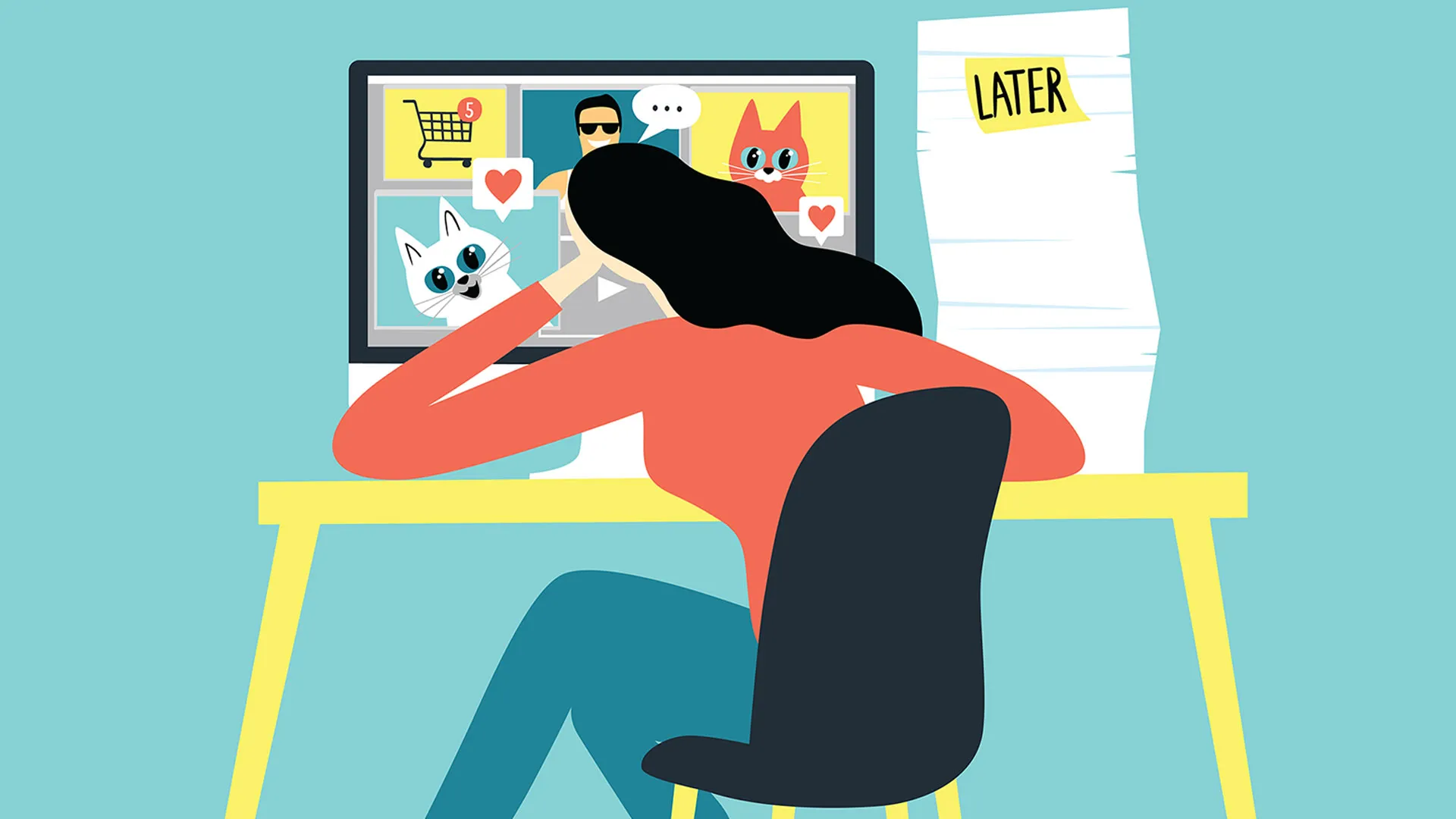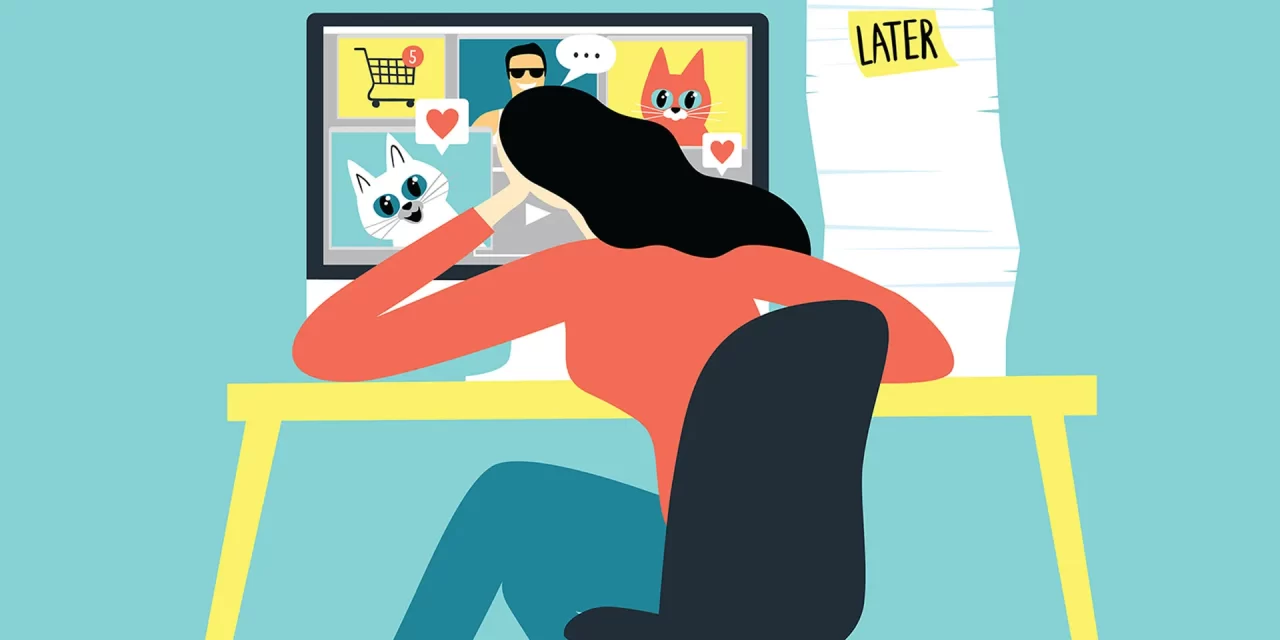Know How to stop procrastinating in 2024
Everyone has experienced that dreadful afternoon feeling.
The feeling that you have to turn in an assignment or meet a work deadline and are trying to get your work done at the last minute.
You may know a deadline is coming, but you put it off for as long as possible – preferring to do any other work available.
Procrastination is a real thing, a trap many of us fall into, where we do almost anything other than what we need to do. It may be to avoid an unpopular task or prefer to focus on more enjoyable tasks.
You need to be able to develop effective strategies that allow you to overcome procrastination.
Knowing how to organize and motivate yourself is a potential skill employer seek.
It is important to understand that procrastination is not the same as laziness. If you are lazy, you are inactive and trying to avoid all tasks at any cost.
In contrast, procrastination is an active choice. You’re likely still busy, but you’re just doing things other than what you must do to ensure you meet your deadlines.
What is the reason for the delay?
Regular procrastinators need to examine the root cause of their procrastination. Once you become aware of the reasons for your procrastination, you can begin to develop strategies to help you overcome them.
You may be trying to avoid specific tasks because you find them challenging or do not like the work.
Maybe you’re procrastinating because you’re worried about work or lack the confidence to start. Self-sabotage is often the cause of procrastination because a person may feel unfit for a job role.
You may feel overwhelmed by a project and need clarification on the best place to start, so you put it off until it feels almost unmanageable.
Perfectionists Some people can procrastinating because they are afraid of making mistakes. They may be afraid of receiving negative or constructive feedback or may suffer from a fear of failure.
Why is it important to stop procrastinating at work?
Employers are looking for candidates who can manage their workload, prioritize tasks and meet deadlines.
In addition, they need self-motivated people who can work carefully with others to ensure that their workload and deadlines do not affect the work of others.
If someone is a frequent procrastinator, they may develop negative traits that can hinder their career prospects.
For starters, if someone is a self-saboteur, they may only apply for new positions and new opportunities if they were putting off writing their cover letter or submitting their resume.
If they don’t have the confidence to put themselves forward for new roles or to push themselves out of fear of failure, they will be more likely to procrastinate in the workplace and hold themselves back from advancing.
Second, if you develop a reputation as a procrastinator in the workplace, your line manager may overlook you for promotion.
They may feel that you cannot keep on top of your workload and fear that your procrastination may affect other people managing their tasks. This is especially true if you collaborate with others as a team.
If you’re known for avoiding complex tasks or focusing only on the enjoyable aspects of your job, you may be viewed as unhelpful or someone who can’t prioritize and manage their workload. You may be seen as a poor decision-maker and someone who needs to be trusted to ‘get the job done.’
You may have developed bad habits, and you need to overcome these to see that you deserve better success.
How do you know you are procrastinating?
To help develop strategies that will help you stop procrastinating, you need to be aware of the signs that you’re procrastinating.
As mentioned above, procrastination is different from laziness.
You may be incredibly busy, but you may still avoid doing the work that you need to do. Therefore, some people do not realize they are procrastinating because they are working hard on other tasks.
For those working in project management roles that require focused attention on various tasks at once, it can be very difficult to spot the signs of procrastination.
Here are some common signs that you are procrastinating.
You make a to-do list but focus on the easy tasks first.
You avoid complicated items – especially tasks you don’t enjoy – and put them off for as long as possible.
You begin a task yet are easily distracted by other activities such as checking your email, making a cup of coffee, and pecking the toilet.
If someone asks you a question or sends you an email, you respond immediately instead of continuing with your current task.
You may feel that you are ‘not in the mood’ or ‘not in the right frame of mind’ to do a specific task, and you decide to wait for a better time, which may never come.
If any of these behaviors sound familiar, you’re probably procrastinating.
There’s nothing wrong with a little procrastination in small doses. But when it becomes more obvious to others, it’s time to do something about it and find ways to help you stop procrastinating.
Are there different types of procrastinators?
You may be surprised to learn that not all procrastinators are alike.
Accountability coaches Ali Schiller and Marisa Boisvert believe there are four types of procrastinators.
You need to understand your personality type to identify which group they think you belong to. Once you gain this insight, you’ll be in a better position to establish ways to help stop procrastination.
Actor
An artist is someone who believes they work better when they are under pressure.
They may intentionally choose to leave themselves tight for a time before starting a task because it helps them to focus.
However, these employees may make minor mistakes. They can be difficult to work with – especially if they need to collaborate with others and can’t fit their team members’ work schedules.
Their decision to skip tight deadlines can have serious consequences for others who prefer to have a better grip on their time.
Self-deprecating
A self-deprecating person is someone who usually mixes procrastination with laziness.
They may think they are lazy by avoiding tasks but are working hard and need a break.
Schiller and Boisvert believe that procrastinators must understand that taking regular breaks or walks to get fresh air can make them far more productive. They can work more efficiently and get more done by refreshing their mind and resetting themselves.
Overbooker
An overbooker is someone who has a huge to-do list.
They intentionally add too many tasks to their workload so that they can use the phrase “I’ve been too busy” as an excuse when a task inevitably doesn’t get done.
These workers often avoid doing tasks they don’t enjoy, and they use busyness to explain.
These people need to think carefully about the reasons behind their procrastination – then, they can decide what methods are best to help them stop procrastinating.
Novelty seeker
A novelty seeker is someone who is easily distracted by new tasks and new projects.
They like the challenge of starting new items but need to take the time to make sure previous tasks are completed.
Innovation seekers are often entrepreneurs who need help and guidance to complete one task before moving on to the next.
Measures to prevent procrastination
Now you know the reasons why you procrastinate, and you know how to recognize the signs of procrastination.
The next question is, “How do I stop procrastinating immediately?”
Here are some practical tips to help you overcome your tendency to procrastinate.
Self-awareness
By now, you must have understood that there can be many reasons for procrastinating. You must be self-reflective and think honestly about why you are putting it off.
Do you find work a challenge? Is it something you hate doing – if so, what exactly do you not like about it? Is it because you don’t like the people you’re working with?
Be as honest with yourself as possible. Failure to think critically will lead to bad habits, and it will be very difficult to stop procrastinating.
Top tip! Think about creating a personal SWOT analysis. If you know what your weaknesses are, you can develop ways to overcome them. This will help you reflect on your performance and improve your skills and general employability.
Improve your organizational skills
A quick and easy way to ensure you always turn in assignments on time is to look at your managerial abilities.
How are you tracking what work needs to be done and what tasks are overdue?
It will help if you start by making a to-do list or creating effective action and action plans. You may want to color code your list – urgent priorities/medium priorities/low priorities, or tasks that require input from others.
By outlining exactly what you need to do and when it needs to be done, you can be more confident that you are working efficiently. If you know you’re working with someone else on a project, can you talk to them to find out when they need your work to help them work effectively?
Make a detailed plan and consider what you need to stick to.
Top tip! Pay attention to the unpleasant tasks first. One strategic way to use your to-do list is to put off-putting tasks first. You can then allocate more time to the things you enjoy doing.
Positive outlook
It will help if you focus on doing an activity rather than avoiding it.
You should shift your mindset so that when you see a task, you know it needs to be done immediately. For example, writing a list and crossing items off can be surprisingly satisfying.
Top tip! Set yourself up with a ‘task jar’ – perhaps putting a dollar in the jar every time you complete a task ahead of time. By motivating yourself with a reward, you may find it easier to complete tasks you don’t enjoy.
Break it down into steps
Break your task down into small chunks – one step at a time.
Many people procrastinate because they think a task is too overwhelming. But if you break it down into smaller, more manageable chunks, it becomes easier to tackle. The smaller the task, the more manageable it seems, and you won’t put it off anymore.
By ticking off smaller elements from your to-do list, you’ll be less likely to get overwhelmed and will be able to see your progress.
Change your environment
A change of scene can motivate you more.
With many people continuing to work from home, it can be easy to get distracted by your work or school assignments.
Too many home distractions, like turning on the washing machine or checking social media. If you’re easily distracted, move your desk to a less distracting location or go to a secluded spot, such as a cafe.
Simply taking off your laptop and moving to a different room or another part of the office can re-energize your mind and help you work more effectively.
Eliminate distractions
This is similar to the tip above but is more specific and can be done even if you can’t change your environment.
Eliminate any distractions. If you’ve been procrastinating for too long and are now in a rush to meet a deadline, take practical steps to remove distractions.
Try to find a way to work continuously without unexpected interruptions.
Top tip! Be bold and mute your phone, or let calls go straight to voicemail. Similarly, turn off your email notifications – you might even consider using an out-of-office reply that states you’re unavailable for a few hours.
The Two-Minute Rule Can Help You Stop Procrastinating
One beneficial technique is the two-minute rule.
This strategy was devised by David Allen, who believes that if a task takes less than two minutes, you should do it now.
Overcoming procrastination is all about creating new, positive habits. It’s about refining your to-do list and working tasks into as few items as possible. And you can build these habits by creating a series of two-minute rules.
It deals with breaking down tasks into steps or smaller tasks.
For example, a person might start by saying they want to exercise at the gym. Jumping on the treadmill or picking up a dumbbell isn’t the first step. Instead, the first thing to do is put on your gym wear or sneakers.
Instantly, a ‘big’ activity becomes very small and achievable, and it’s inspiring.
Regarding work, checking your email can become “answering two emails.” Or it may be “making a sales call” to respond to an associate on a specific strategy.
The sooner a well-organized to-do list is created, the easier it is to establish it as a new habit that can fit into your daily routine.
You’ll soon find it much easier to be efficient and tackle those challenging tasks because you’re limiting them to just two minutes. From here on out, you can start building your way toward your end goal, and you will be more productive.
Final thoughts
Procrastination can have a serious impact on your work life. You may think waiting until you have an urgent deadline before starting a project or specific task is harmless. After all, if you set a deadline, there’s certainly no harm in it.
Well, you may be wrong about that.
Employers want to work with people who are great team players.
They want to hire people who can prioritize, meet deadlines, be good decision-makers, and put their egos aside to collaborate with coworkers for the business’s good.
You may be considered difficult to work with if you gain a reputation for procrastination. When working in a team environment, your actions may affect other people’s ability to do their jobs. As a result, you may need to improve your career growth opportunities.
You should look carefully at your working methods. Is your tendency to procrastinate affecting others? Are you causing delays or problems elsewhere by your inability to complete the task?
You should work on improving your organizational skills. Simply asking someone else to review your to-do list can help you identify immediate priorities and hold you accountable.
Procrastination is a difficult habit to break, but you can be successful at it. The first step is admitting that you procrastinate. The next step is to make one positive change, one step at a time, to avoid procrastination.







